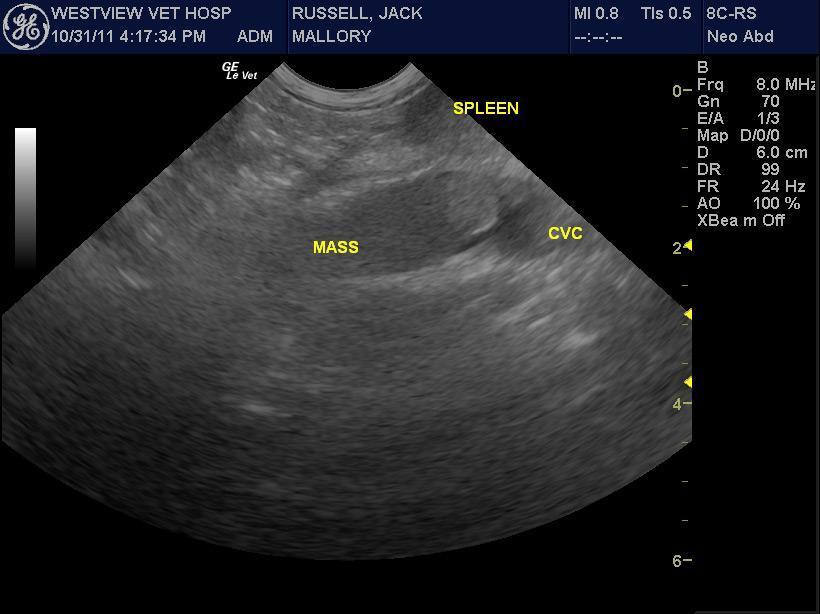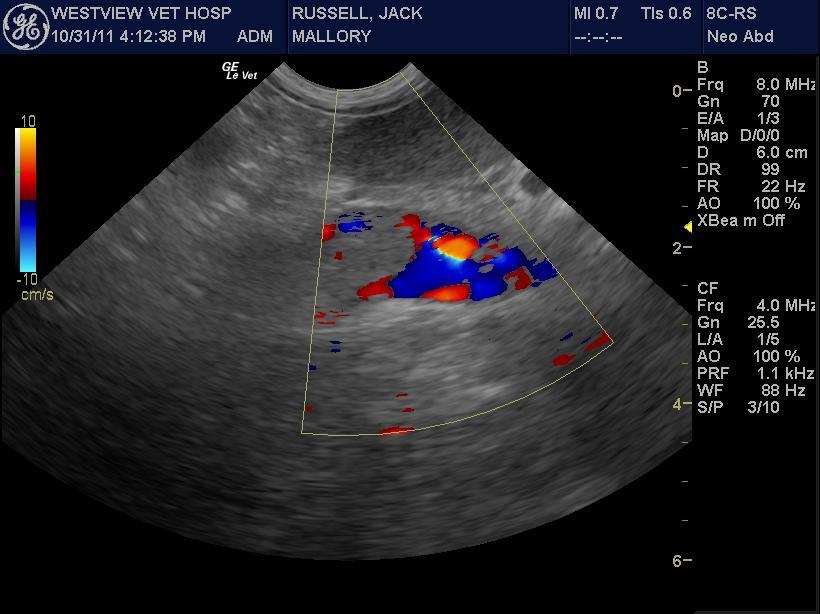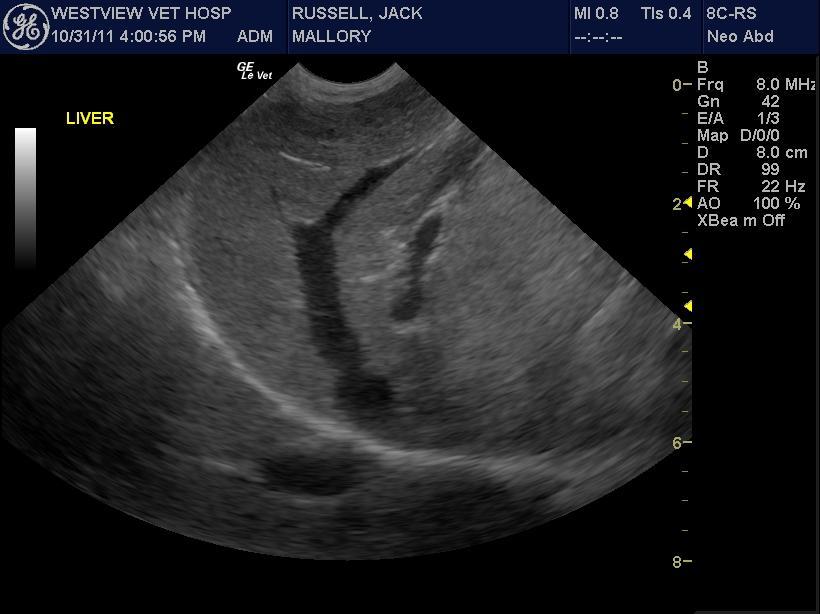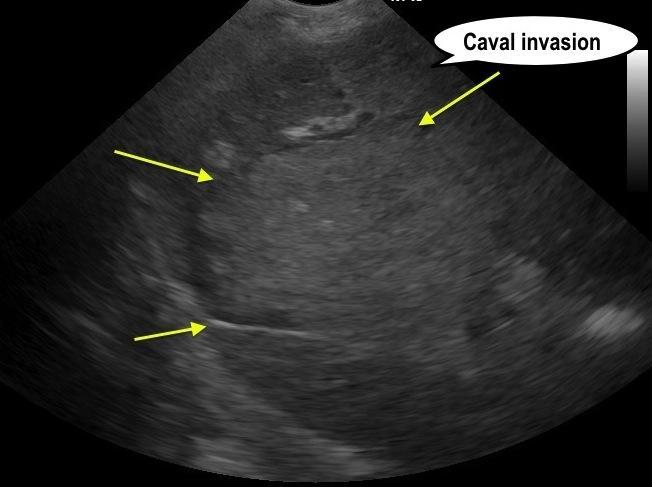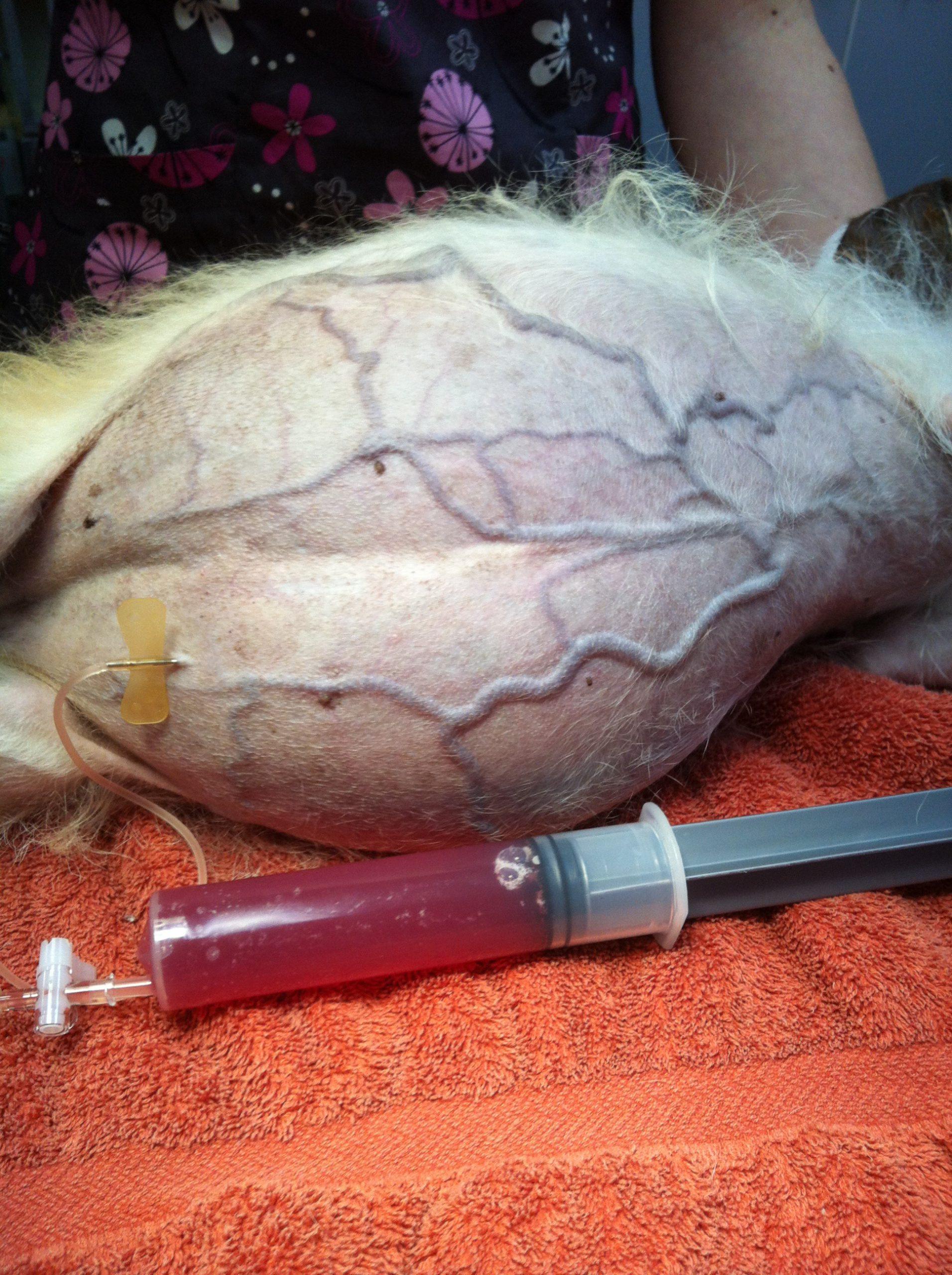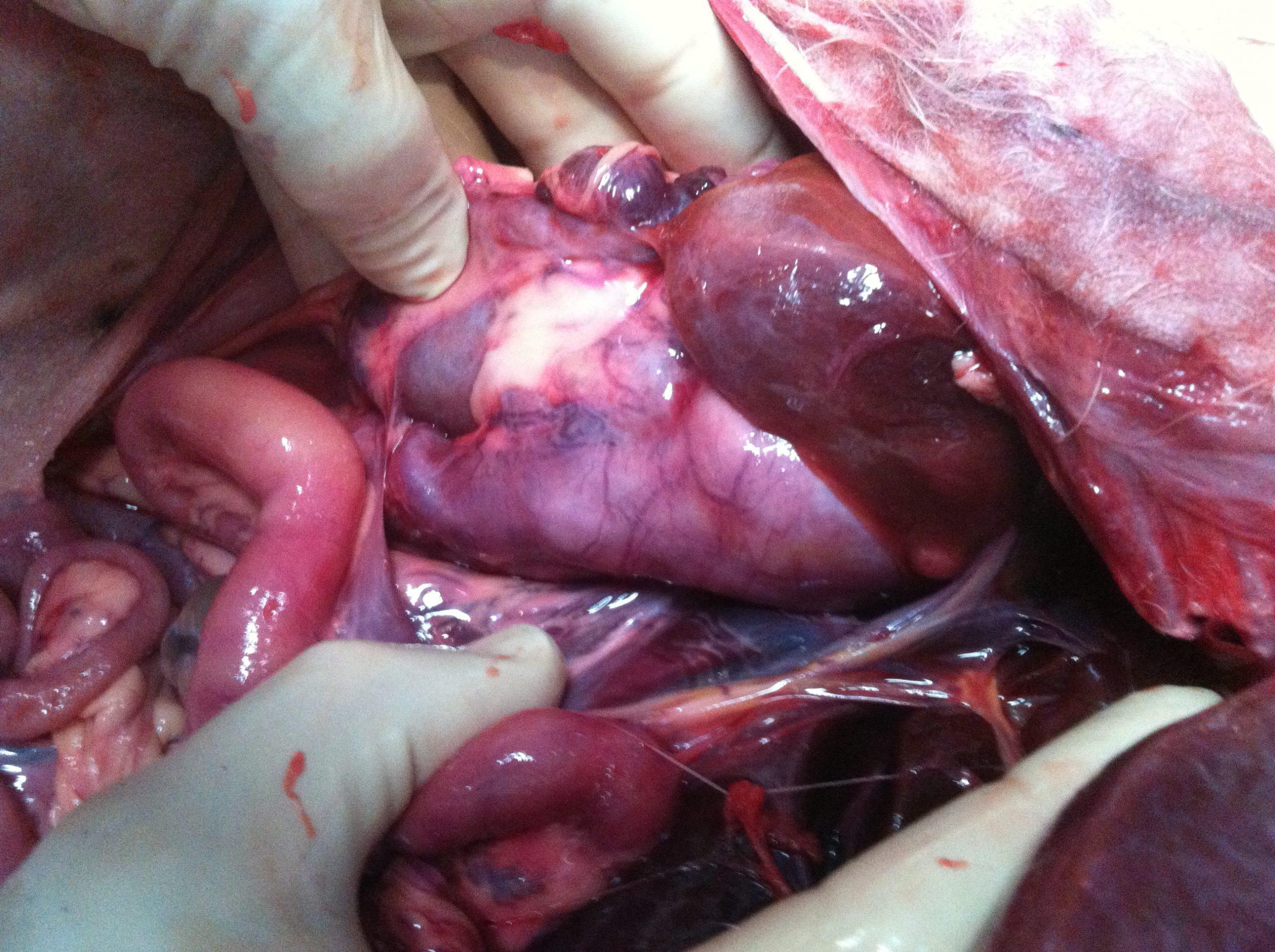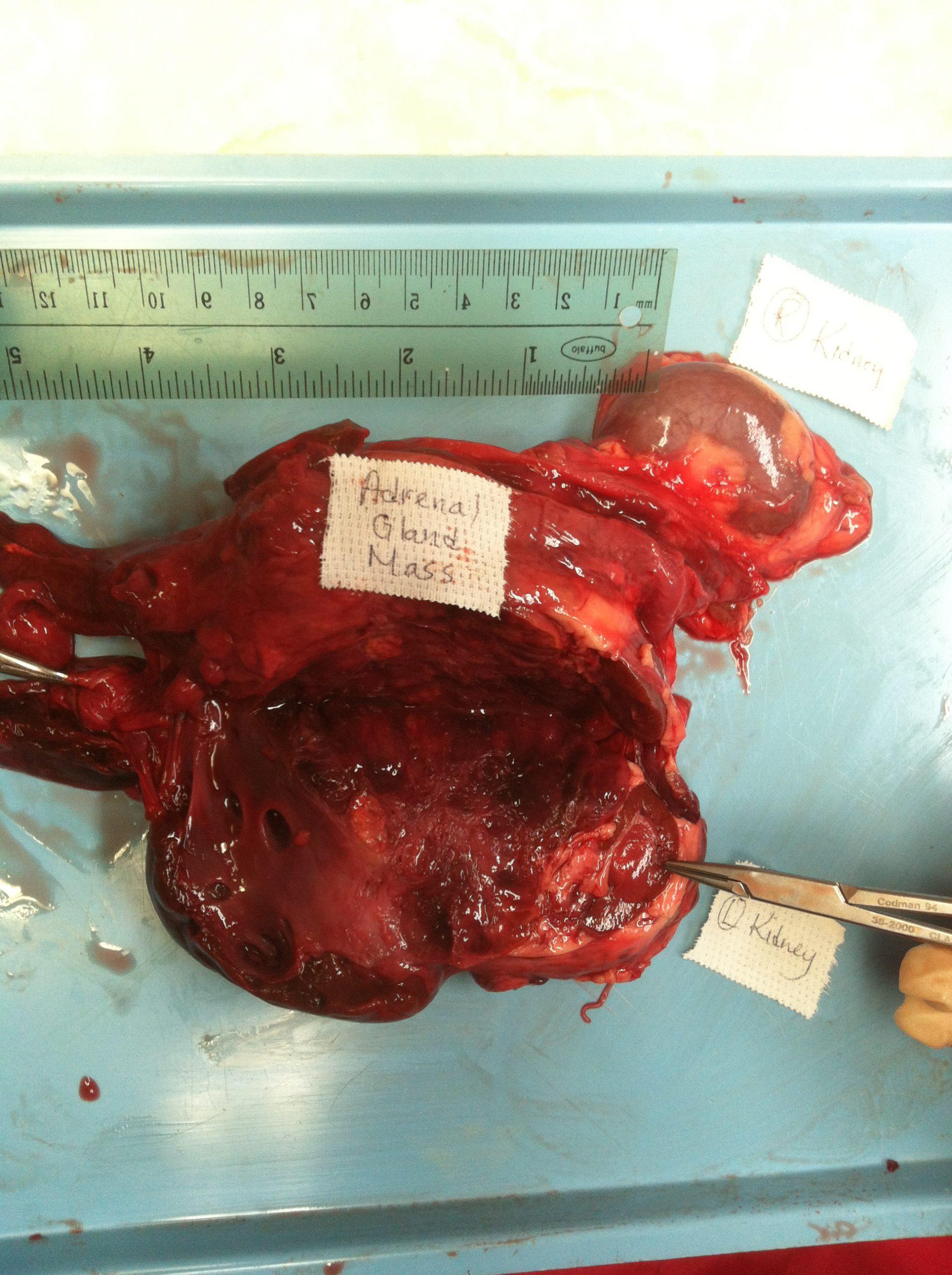The patient is a 12-year-old spayed female Jack Russell Terrier. The abdomen was progressively swollen on presentation. Only minor anemia was present with otherwise normal blood work. Chest radiographs reveal normal heart size and normal lung fields. 1-2 liters of ascites had been drained from this patient weekly after abdominal tap revealed modified transudate fluid. Abdominal sonogram was performed to decipher the cause of ascites.
The patient is a 12-year-old spayed female Jack Russell Terrier. The abdomen was progressively swollen on presentation. Only minor anemia was present with otherwise normal blood work. Chest radiographs reveal normal heart size and normal lung fields. 1-2 liters of ascites had been drained from this patient weekly after abdominal tap revealed modified transudate fluid. Abdominal sonogram was performed to decipher the cause of ascites.
